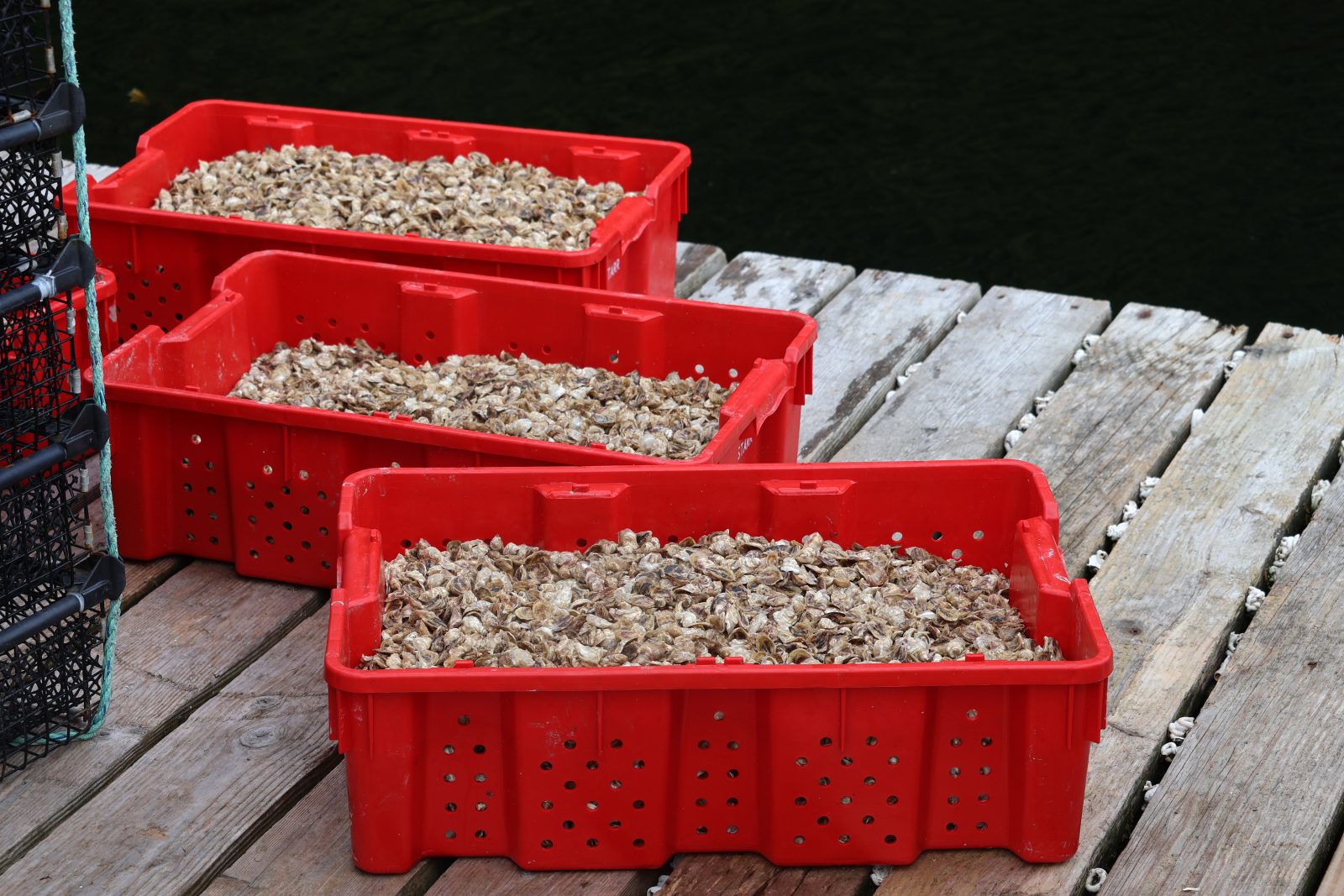Through the the Alaska Fisheries Development Foundation (AFDF) subaward, the Alaska Mariculture Cluster (AMC) is proud to present the De-Risking Investments & Site Suitability Program. This is a targeted initiative within AMC’s Research & Development grant component focused on reducing barriers to investment and improving site-selection confidence for Alaska’s emerging mariculture industry.
In July 2024, AMC issued the De-Risking Investments in Aquatic Farming RFP. The intent of the solicitation was to fund modeling and/or data-collection studies that support the mariculture industry in selecting appropriate sites and right-sizing equipment. Two projects were awarded funding.
Click to jump to a project:
- Kelson Marine:
Ocean Wave Simulations & Site Exposure Analysis
- OceansAlaska: Oyster Seed Size & Performance Optimization
Investors and developers in Alaska’s mariculture sector face elevated levels of uncertainty, including site-exposure risk, physical ocean conditions, biological inputs, and capital cost assumptions. This program was designed to mitigate those risks by generating publicly accessible data and analysis that enhance decision-making and investment readiness.
Kelson Marine
Ocean Wave Simulations & Site Exposure Analysis
Funding: $1,099,990
Region: All Regions
Project Start: November 2024
This project uses advanced wave and current modeling to assess exposure risks across candidate mariculture sites in Alaska. By quantifying ocean energy conditions and their implications for farm layout, mooring design, and equipment durability, the project delivers valuable insights that directly inform capital investment and operational planning. The findings will serve as a foundation for establishing engineering and financial standards that better align with Alaska’s coastal realities.
Interim Update (Pending)
Final Report (Pending)
Learn More
OceansAlaska
Oyster Seed Size & Performance Optimization
Funding:$88,134
Region: All Regions
Project Start: March 2025
This project complements this work by focusing on biological performance. It examines how variations in seed size affect survival, growth, and yield under local environmental conditions. Through controlled trials and data analysis, the project aims to identify optimal seed-size thresholds that maximize farm productivity and minimize early-stage losses. These findings will help growers make more informed decisions about seed sourcing and inventory management — reducing one of the key biological uncertainties that often deter investors and limit farm scalability.
Interim Update (Pending)
Final Report (Pending)
Learn More



